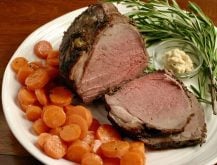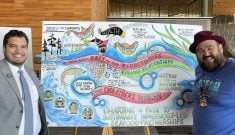JACKFISH LODGE, Sask. – It was a Friday and Saskatchewan’s home economics teachers had cut classes to head to their annual convention.
Two-thirds of the 150 home ec teachers in the province showed up to hear the latest in food, sewing and life skills courses at a resort in the Battlefords Provincial Park Sept. 22-24.
While home economics is no longer a compulsory course, it is part of a list of applied arts subjects that students in Grades 7-9 must take for 150 hours and high school students for one or two credits. In the schools that offer home economics and industrial arts, both sexes must take the courses.
Read Also

Know what costs are involved in keeping crops in the bin
When you’re looking at full bins and rising calf prices, the human reflex is to hold on and hope for more. That’s not a plan. It’s a bet. Storage has a price tag.
“We’re trying to teach the kids to be good managers,” said Rietta Frick-Davis of Rosetown, past-president of the Saskatchewan Home Economics Teachers Association. “You’re teaching the kids to make things from scratch.”
Incoming SHETA president AnnaLee Fuhr of Kamsack said while some school boards may regard applied arts as an expensive classroom because of machinery and appliance costs, she said teachers are creative in coming up with resources. As well with the provincial government pushing schools to become a community lifelong learning centres, home ec and industrial arts belong under that life skills banner.
Fuhr added that as the economy becomes more dependent on tradespeople, the applied arts courses will again become popular.
Specialty training
Home economics is no longer taught at most universities as a separate degree. Instead it is a specialty for those training under the college of education or agriculture. In a report to SHETA, Bev Pain, who represents the profession at the University of Saskatchewan, noted that although 150 students applied to take the applied arts training in the education college, there were only 15 positions allotted for the home ec side and 15 for industrial arts.
Frick-Davis, now in her 21st year of teaching home ec, said she always tells her students the course is important “for making a living and a living itself.”
Fuhr, in her second year as a teacher, said home ec is a tossed salad of learning in which students need English skills to read a recipe, math to measure ingredients and science to understand why it flopped.














